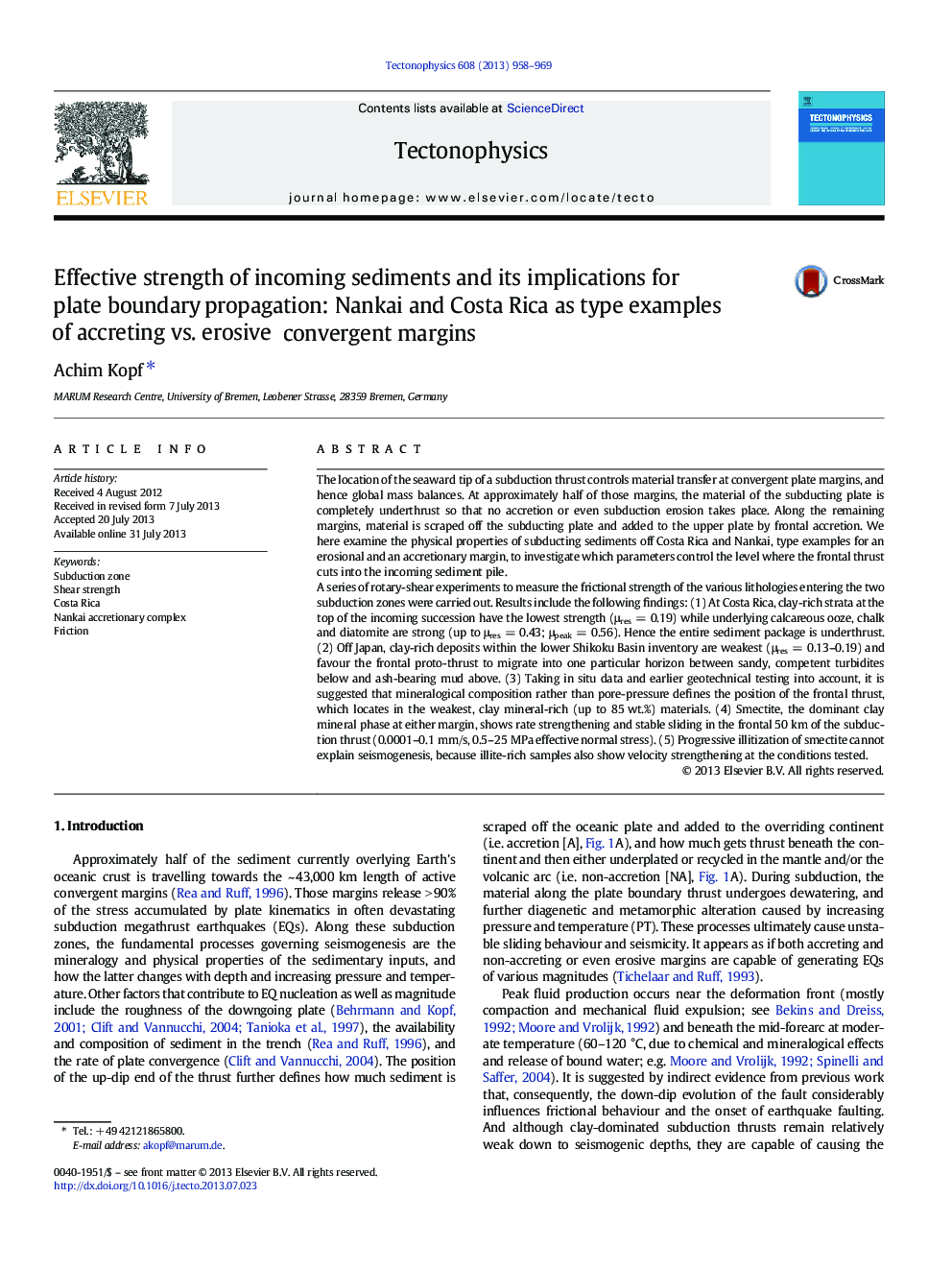| کد مقاله | کد نشریه | سال انتشار | مقاله انگلیسی | نسخه تمام متن |
|---|---|---|---|---|
| 6434022 | 1636779 | 2013 | 12 صفحه PDF | دانلود رایگان |
• We carried out ring shear tests at up to 25 MPa normal stress on subduction zone sediments.
• Results from Costa Rica and Nankai attest that weak clays control initiation of thrusting.
• Down-dip variations of subduction inputs show velocity-strengthening and stable sliding.
• Clay minerals define both the position of the frontal thrust and its frictional behaviour down-dip.
The location of the seaward tip of a subduction thrust controls material transfer at convergent plate margins, and hence global mass balances. At approximately half of those margins, the material of the subducting plate is completely underthrust so that no accretion or even subduction erosion takes place. Along the remaining margins, material is scraped off the subducting plate and added to the upper plate by frontal accretion. We here examine the physical properties of subducting sediments off Costa Rica and Nankai, type examples for an erosional and an accretionary margin, to investigate which parameters control the level where the frontal thrust cuts into the incoming sediment pile.A series of rotary-shear experiments to measure the frictional strength of the various lithologies entering the two subduction zones were carried out. Results include the following findings: (1) At Costa Rica, clay-rich strata at the top of the incoming succession have the lowest strength (μres = 0.19) while underlying calcareous ooze, chalk and diatomite are strong (up to μres = 0.43; μpeak = 0.56). Hence the entire sediment package is underthrust. (2) Off Japan, clay-rich deposits within the lower Shikoku Basin inventory are weakest (μres = 0.13–0.19) and favour the frontal proto-thrust to migrate into one particular horizon between sandy, competent turbidites below and ash-bearing mud above. (3) Taking in situ data and earlier geotechnical testing into account, it is suggested that mineralogical composition rather than pore-pressure defines the position of the frontal thrust, which locates in the weakest, clay mineral-rich (up to 85 wt.%) materials. (4) Smectite, the dominant clay mineral phase at either margin, shows rate strengthening and stable sliding in the frontal 50 km of the subduction thrust (0.0001–0.1 mm/s, 0.5–25 MPa effective normal stress). (5) Progressive illitization of smectite cannot explain seismogenesis, because illite-rich samples also show velocity strengthening at the conditions tested.
Journal: Tectonophysics - Volume 608, 26 November 2013, Pages 958–969
